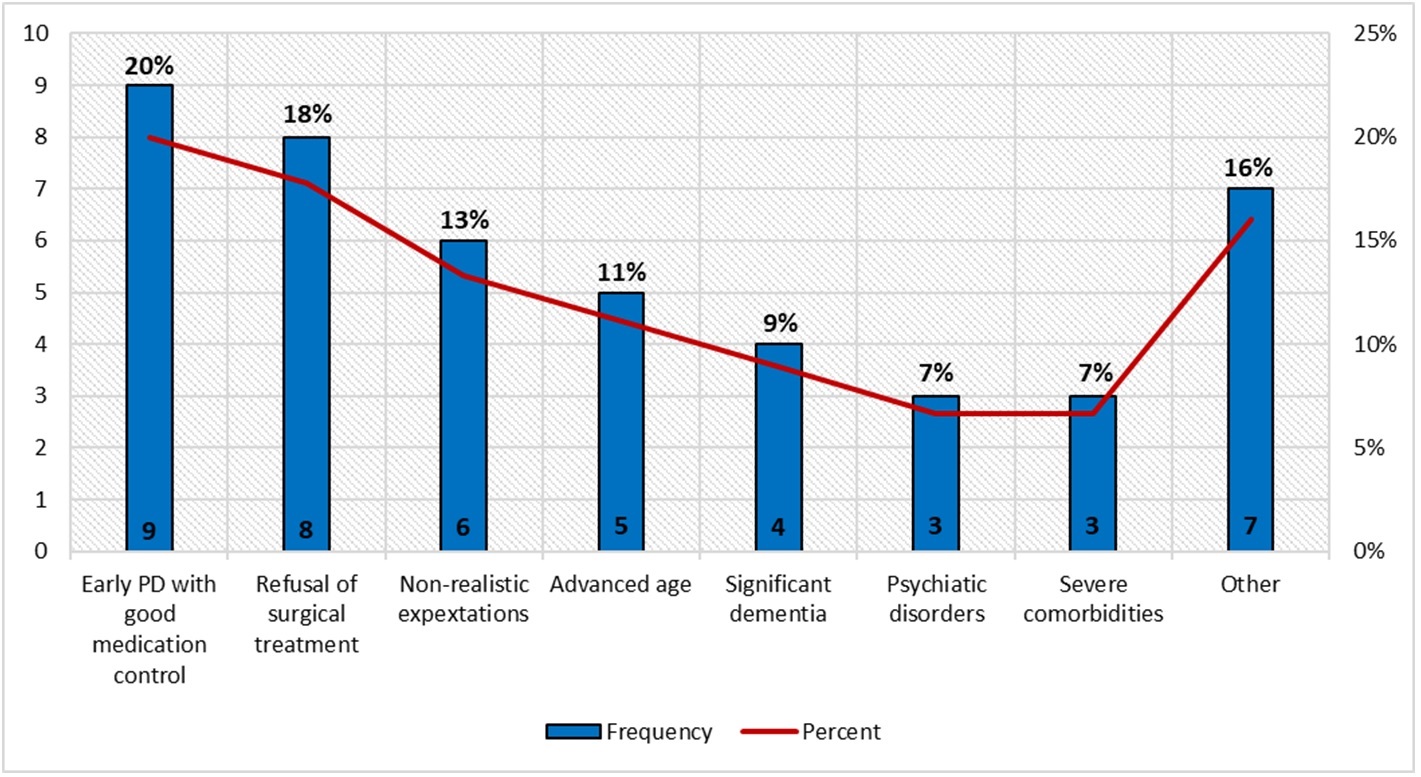Category: Surgical Therapy: Parkinson's Disease
Objective: Тo present our initial experience in patient selection and the early postoperative results from bilateral subthalamic nucleus (STN) deep brain stimulation (DBS) in advanced Parkinson’s disease (PD) patients in the University Hospital “St. Marina”, Varna, Bulgaria.
Background: DBS is a minimally invasive, effective surgical treatment for advanced PD patients with motor complications such as motor fluctuations and dyskinesia or refractory tremor. The results of DBS in PD patients depend on the patient selection and the experience of the interdisciplinary team of the DBS center.
Method: Patients with late-stage PD were assessed by a multidisciplinary team including neurologist, neurosurgeon, psychiatrist and a clinical psychologist. All DBS candidates were screened using our own local protocol, consisting of neurological assessment, clinical investigations and a set of rating scales for evaluation of the severity of PD, cognition, neuropsychiatric status and quality of life.
Results: A total of 66 PD patients were referred to our DBS center from December 2018 to December 2022. During the patient selection, 48 patients had at least one exclusion criteria, most frequently – early PD (9 (20%)), refusal of surgical treatment (8 (18%)) and nonrealistic expectations (6 (13%)) [Fgiure1]. The other 18 patients (15 males and 3 females) with a mean age of 62.7 ± 7.1 were assessed as good candidates and underwent bilateral STN-DBS treatment. The mean duration of Parkinson’s disease was 9.2 ± 4.0 years, whereas the main indication for STN-DBS was disabling motor fluctuations in 13 patients, severe dyskinesia in 2, levodopa-resistant tremor in 2, and medication intolerance in 1 patient. During the levodopa challenge at the presurgical evaluation, the mean motor UPDRS score was 43.6 ± 11.7 in the “OFF”-period, and 21.8 ± 7.3 in “ON”-period with the best medical treatment (BMT), representing an improvement of 50.1% in the best medical therapy (p<0.001). One month after the bilateral STN-DBS implantation, there was a notable improvement in the motor UPDRS score: 19.5 ± 8.9 with DBS-ON and BMT (p<0.001). STN-DBS allowed a 67.2% significant reduction of the daily levodopa intake – from average 915mg/day preoperatively to 300mg/day postoperatively [Table1].
Conclusion: Bilateral STN-DBS is a highly effective treatment for advanced PD patients, whereas patient selection is the most important step towards optimal results.
To cite this abstract in AMA style:
M. Tsalta-Mladenov, V. Dimitrova, M. Moynov, Y. Enchev, S. Andonova. Deep brain stimulation for advanced Parkinson’s disease: Initial experience in Varna, Bulgaria [abstract]. Mov Disord. 2023; 38 (suppl 1). https://www.mdsabstracts.org/abstract/deep-brain-stimulation-for-advanced-parkinsons-disease-initial-experience-in-varna-bulgaria/. Accessed April 1, 2025.« Back to 2023 International Congress
MDS Abstracts - https://www.mdsabstracts.org/abstract/deep-brain-stimulation-for-advanced-parkinsons-disease-initial-experience-in-varna-bulgaria/


